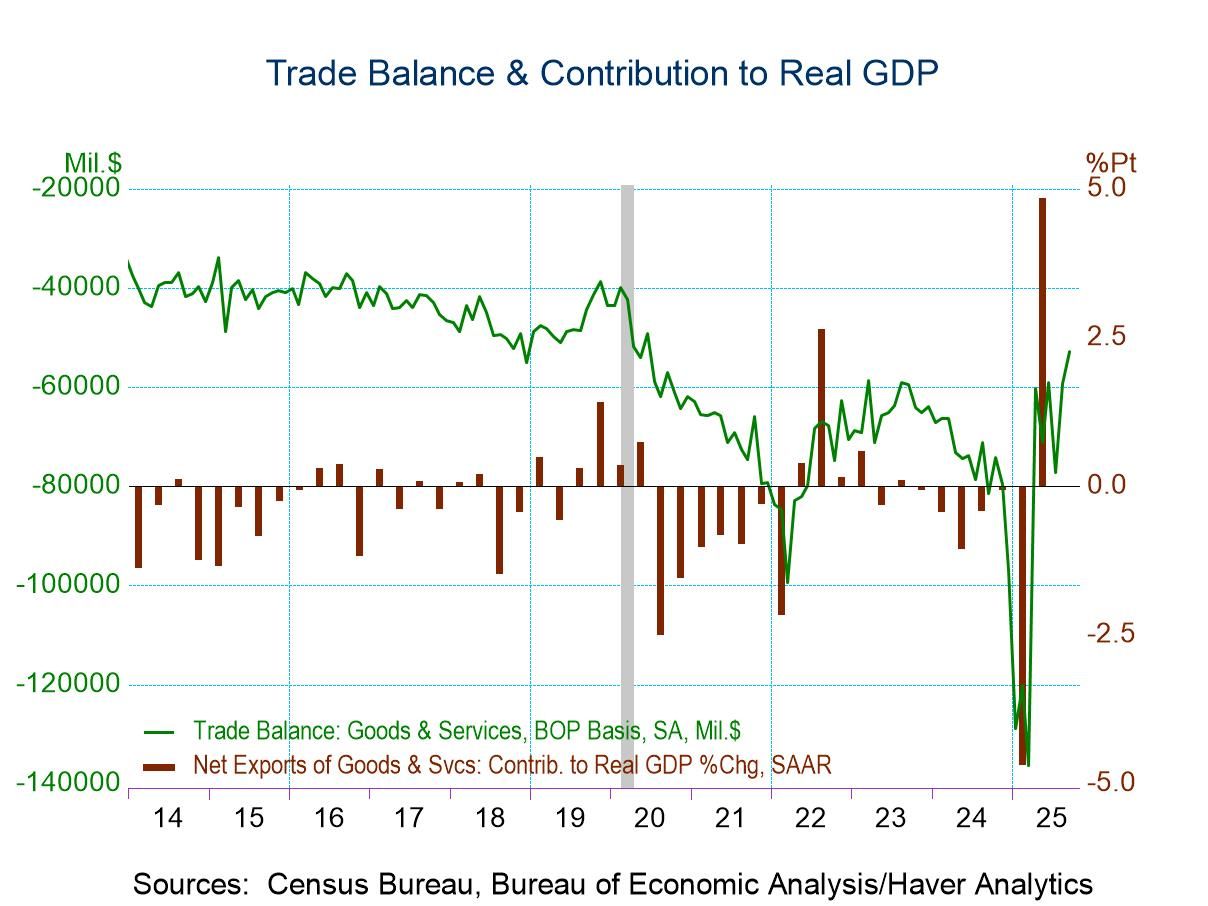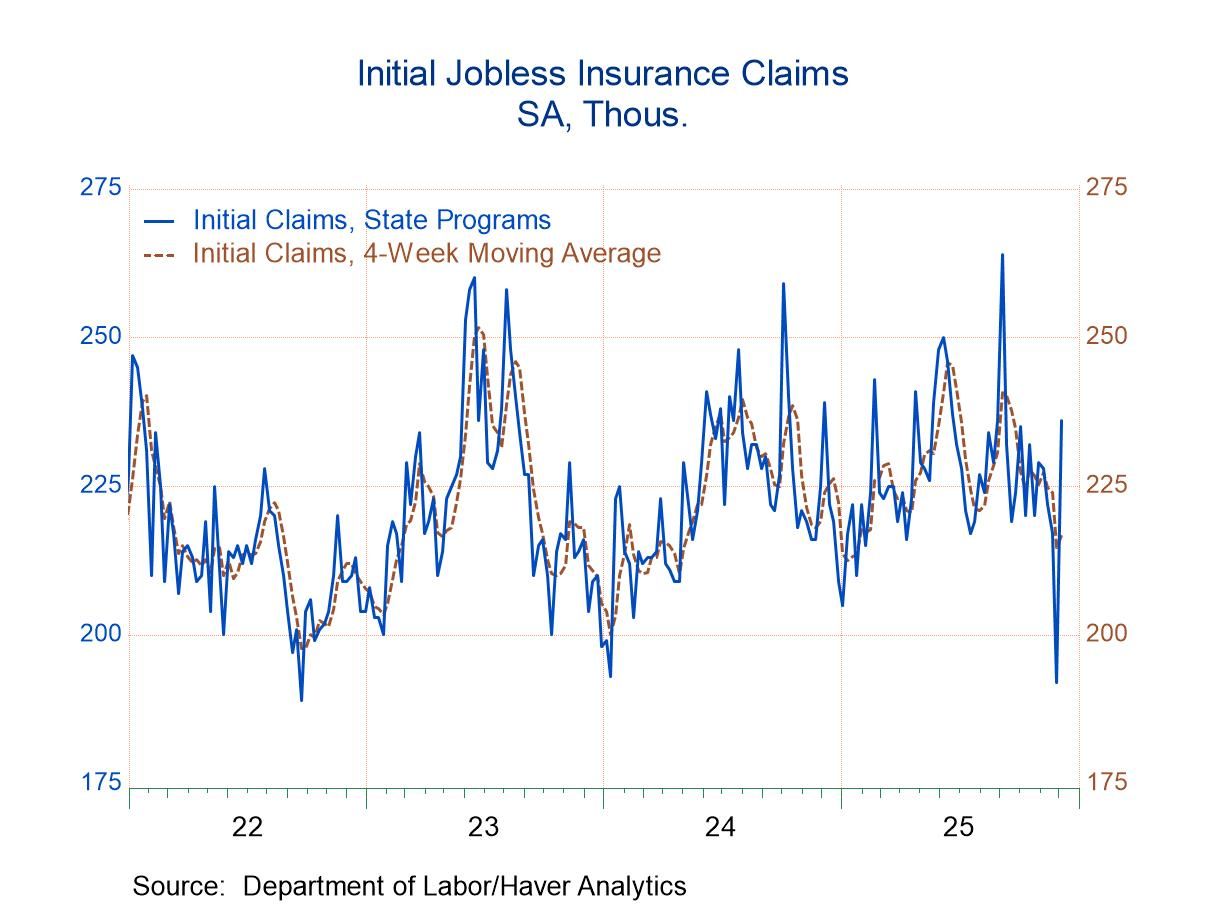 Global| Jun 21 2012
Global| Jun 21 2012EMU PMI Decline Slows but EMU Problems Remain Deeply Ingrained
Summary
The Markit PMI flash readings for June offer little in the way of solace. The MFG reading fell while the service sector reading perked up ever so slightly. Positioned in their respective high-low ranges, the MFG index stands in the [...]
 The Markit PMI flash readings for June offer little in the way of solace. The MFG reading fell while the service sector reading
perked up ever so slightly.
The Markit PMI flash readings for June offer little in the way of solace. The MFG reading fell while the service sector reading
perked up ever so slightly.
Positioned in their respective high-low ranges, the MFG index stands in the 41.8th percentile while the Service sector gauge stands in its 32.6th percentile. These are readings clearly below their respective midpoints (50%) but still not devastatingly weak. No, for that we need a different metric.
A second ranking method is at the bottom of the table. Instead of ranking each sector reading in its high/low range we rank each as a position in its historic queue. This metric is based on an ordinal standing instead of cardinality. The difference is in the distribution of values under each metric. The ranking metric uses every single observation to position the current reading. The high low uses just the high and the low and the current reading. In some sense the ranking measure uses more complete information and it tells a very different story. The MFG sector for EMU stands in the 6.6 percentile of its queue with the services sector in the 7.2 percentile of its queue. Both of these readings show that they are weaker only 6% to 7% of the time. That is very different from the standings inferred from the high-low range data that are in the 32-41st percentiles of those ranges.
We interpret this to means that the sectors are rarely weaker than they are now. But, when they do get weaker, they can get substantially weaker. We show the high and low readings for each sector in the panel above. The MFG index has been as low as 33.55 and the service sector has been as low as 39.24. We view these indicators as being on the cusp of a potential cliff. They are rarely lower but if we see Europe slip into a real recession instead of the scattershot recession it currently is weathering, the PMII’s are going to drop by a lot more – at least some of them are....
I think these two metric which differ a lot in their message are not at odds as much as they reinforce exactly what is going on in Europe giving depth to the picture. There are enough European countries fighting off recession (or put another way, countries with enough strength in their economics and size...) so that the weighting for the large countries counters the extreme weakness in some of the very small recession-afflicted nations.
The problem is that while EMU has some weak-strong balance it is not being shared. The weak are weak because they have lost competitiveness not just demand. And the strong have maintained demand largely because they have held onto their competiveness. So this is not a classical picture of an economic area with cycles swinging through it with different amplitudes and synchronization. These cycles are the RESULT of bad economic management and of policies gone wrong. The prosperous countries do not want to share or bailout the weak ones and the weak ones stand accused of having dug their own graves and being unwilling to modify the programs and policies that got them there. This is the essence of the EMU problem. Neither side will budge in its assessment.
Germany stands in the 8.5th percentile of its queue in June with a high/low percentile reading of 41.4% in manufacturing. Despite having had a somewhat higher raw MFG reading than some other nations its queue standing is lower. That reflects the fact that Germany usually is stronger than the other countries. So when its PMI is at the same level as theirs Germany is actually relatively weaker.
It is the German service sector that is relatively stronger than its EMU neighbors. The German services sector is weak, in the 26th percentile of tis queue, but that is so much better that the weighted average for all of EMU (7.2%). The services sector’s high-low standing is at 45.7 percentile for Germany. France and Italy have service sector standings below 10% for their respective queue metrics.
Germany’s service sector is one of the main pillars holding EMU together. This is of course because of Germany’s competiveness and its much better unemployment results than the rest of the Zone. But if the Zone does not learn to share it is hard to see how it will hold together because its differences are tearing it apart and causing these cycles to be out of sync. This is not simply a normal business cycle that is sweeping over Europe- far from it.
| FLASH Readings | ||
|---|---|---|
| Markit PMIs for the Euro-Area | ||
| MFG | Services | |
| Jun-12 | 44.80 | 46.77 |
| May-12 | 45.13 | 46.67 |
| Apr-12 | 45.89 | 46.88 |
| Mar-12 | 47.72 | 49.20 |
| Segment Averages | ||
| 3-Mo | 46.25 | 47.04 |
| 6-Mo | 47.24 | 48.29 |
| 12-Mo | 48.07 | 48.76 |
| 173-Mo Range | ||
| High | 60.47 | 62.36 |
| Low | 33.55 | 39.24 |
| % Range | 41.8% | 32.6% |
| Range | 26.92 | 23.12 |
| Average | 51.34 | 53.48 |
| Queue % | 6.6% | 7.2% |
Robert Brusca
AuthorMore in Author Profile »Robert A. Brusca is Chief Economist of Fact and Opinion Economics, a consulting firm he founded in Manhattan. He has been an economist on Wall Street for over 25 years. He has visited central banking and large institutional clients in over 30 countries in his career as an economist. Mr. Brusca was a Divisional Research Chief at the Federal Reserve Bank of NY (Chief of the International Financial markets Division), a Fed Watcher at Irving Trust and Chief Economist at Nikko Securities International. He is widely quoted and appears in various media. Mr. Brusca holds an MA and Ph.D. in economics from Michigan State University and a BA in Economics from the University of Michigan. His research pursues his strong interests in non aligned policy economics as well as international economics. FAO Economics’ research targets investors to assist them in making better investment decisions in stocks, bonds and in a variety of international assets. The company does not manage money and has no conflicts in giving economic advice.






